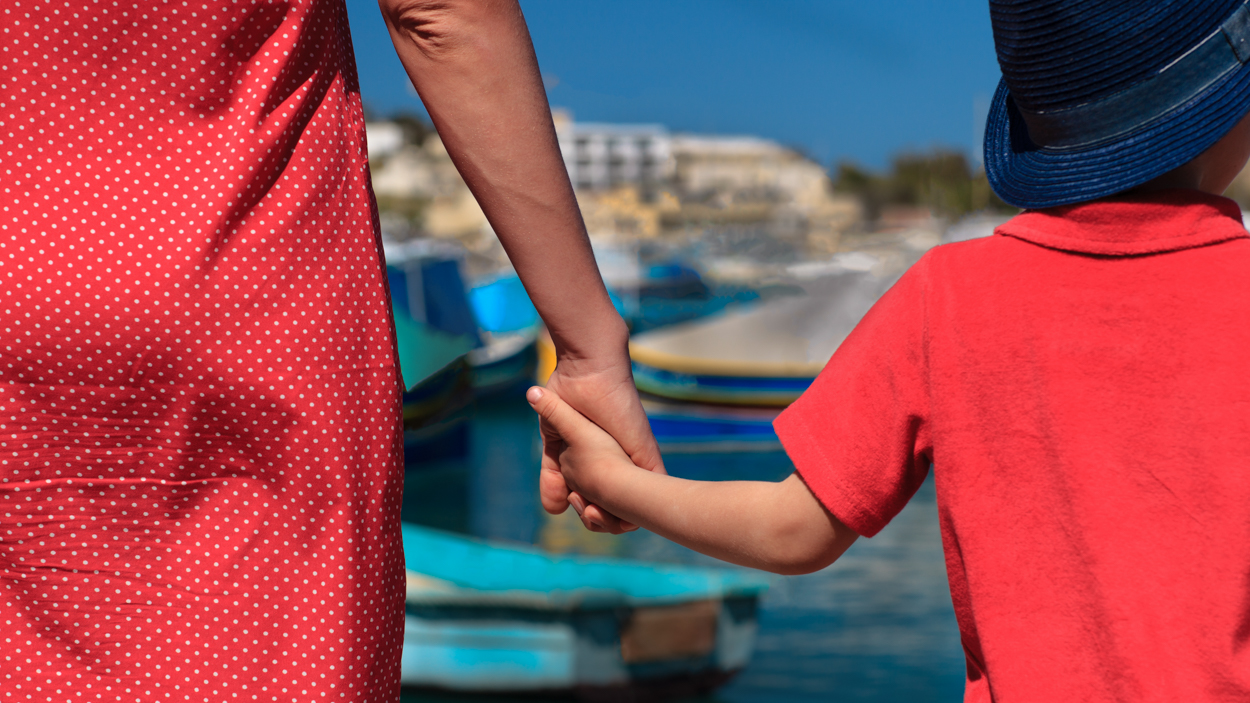

The first time it happened was across the citrus display at the grocery store. I was standing at the Cara Cara oranges and I wore a deep plum-colored sling over my shoulders with my two-week-old daughter curled inside. We hadn’t yet gone grocery shopping together, or much of anywhere else yet. A man I knew, a former neighbor, stared in my direction with a furrowed smile. His look read: ‘What the heck happened?’
“I didn’t know you were pregnant,” he said, grappling for these words. It was as if I’d pulled off a magic trick.
“I wasn’t,” I replied. “We’re in the process of adopting her.” I had no idea what to say about our adoption. Did he look at my graying hair and really just want to ask me whether I’d been unable to get pregnant?
As visible as pregnancy is, adoption can be invisible. Our close friends and family knew we were in the process of trying to adopt. They knew we already had three wonderful boys, two in elementary school, one in preschool. They knew I had really, really wanted another baby. They knew that my husband felt that our hands were full (he was correct). And that ultimately he acquiesced (I heart him; he hearts me).
And this same inner circle — including the kids’ teachers, pediatricians — knew of our adoption plan. But most people didn’t. Of course, an acquaintance across the citrus display would have no idea, and it wasn’t like I could possibly tell every person our whole, exhausted tale of joy, worry and upheaval. Pregnancy, I realized, allows for lots of chance encounters that begin to create a village of people waiting for the baby, too. A postpartum mom doesn’t need words, because she wears her elation and exhaustion and whatever else right upfront. With adoption, my baby appeared to be a complete surprise.
“How big are your other kids now?” he asked.
“The oldest is twelve,” I replied, remembering that his children were a little older than mine. “Next is nine, then five.” He was a tall man, and as I craned my head toward him, my neck ached. So did my shoulders from holding my infant all the time. I remembered he was a chiropractor. Just thinking about that made me feel sorer. I wouldn’t have minded a neck rub, or an adjustment right then and there.
“Wow, you’re going all the way back.” In his smile I could see his bewilderment at the idea of parenting both a newborn and a tween. Or maybe he was just being kind. His dark eyes twinkled in a way that must have put anxious patients at ease.
“We are, I guess,” I said, jostling from side-to-side as my daughter rustled in the sling.
Maybe it was natural that I found myself unsure what to say about our new addition. Tales of the marital angst that led us to this moment –the way I didn’t feel “done” with babies and my husband did — could have tumbled out of me then and there, except those things aren’t fodder for chitchat in the grocery store. There wasn’t a polite way to condense the story, like the parts about the challenging decision about whether to adopt, the nausea my earlier pregnancies had wrought, which really meant even though I probably could have been pregnant again at 43, I felt it was not in my best interests or my family’s. I could have shared with him my fantasy to adopt that I’d had since childhood. It could have been the beginning of some TMI iceberg. But despite my acquaintance’s quizzical smile, I knew didn’t owe him or anyone an explanation. Still, I did feel awkward.
“Well, congratulations,” he said, interrupting my internal dialogue. “She’s beautiful.”
I smiled, because she was beautiful.
“Thanks,” I replied. “See you soon.”
Standing in a daze in front of the perfectly stacked oranges, I realized how exhausting that one short exchange about adoption had been—not because of what we said, but because of what wasn’t said. It might have been the first time I got that question, but I knew it certainly would not be the last. With practice, I hoped answering would get easier.







